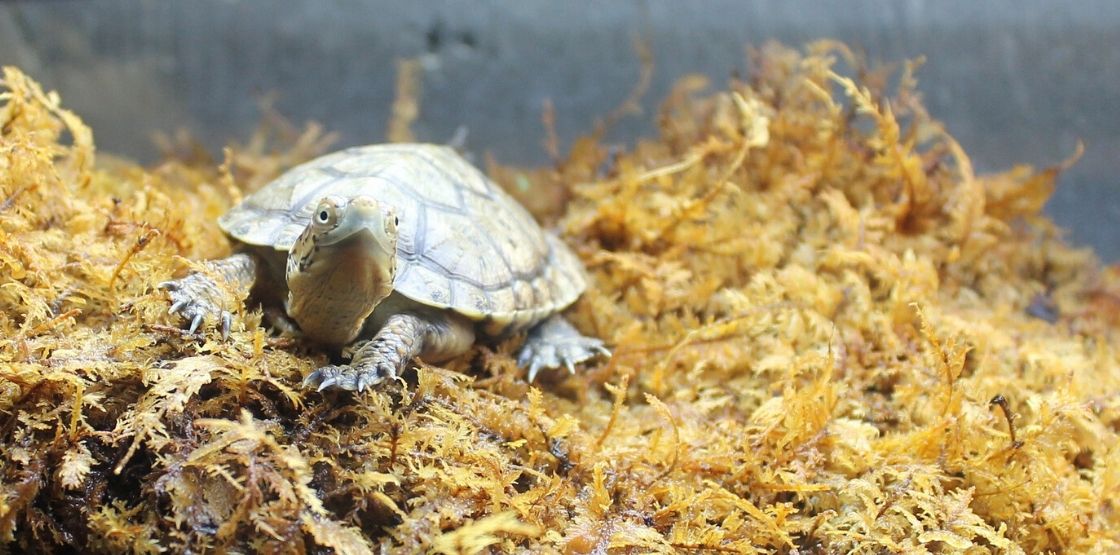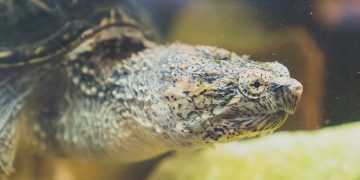A Turtle Tank Setup Guide
If you are looking at getting a turtle, you have probably given a little thought to the tank. This setup is incredibly important for your turtle. Some turtles spend over half of their life in water, so you need to have a tank that allows them the opportunity to go for a swim or bask on a rock. These functions are incredibly important to their health, so you will want to make sure the tank is set up appropriately.
What Size Should Your Turtle Tank Be?
The first thing to consider for your turtle tank is the size. Turtles need a tank that is at least 10 gallons for every inch of their shell. In the U.S., it is illegal to purchase turtles smaller than four inches, so you are likely to be looking at a tank that is at least 50 gallons. Certainly, if your turtle is larger, they need a larger sized tank.
If you get a young turtle, they will continue to grow under healthy conditions, usually at a rate of about one inch per year. That means that the tank you start with is likely going to need to be replaced as your turtle grows. Some turtles can have a shell over 12 inches wide, meaning they need at least a 120 gallon tank.
The water depth is also important for your turtle to swim. You need to make sure that they have at least two times their shell width as the depth of the water in the tank.
Glass Tanks vs Acrylic Tanks
The two major types of material your turtle's tank can be made out of are glass and acrylic. Glass tends to be much heavier than acrylic, but the tradeoff is that acrylic tends to be easier to scratch, especially by your turtle's claws. Acrylic is also generally more expensive than glass.
Many people purchase turtle tanks secondhand and there is nothing wrong with that if you clean it well before placing your turtle in the tank. With that said, you will want to ensure that the tank does not have any leaks. Fill it up with water and let it sit for a few days to ensure no leaks spring up.
With your turtle tank, you will also want to have an area where your turtle can get out of the water and bask. If you purchase a tank kit, you will usually have rocks to set up your turtle tank with.
Light and Heat Support for Your Turtle
Turtles need a significant amount of light, usually around 12 hours of sunlight each day. The light is useful for several reasons, with the main benefit coming from ultraviolet light. Here are some benefits of UV light for turtles:
- Promotes feeding and a good mood
- Strengthens the shell and helps prevent metabolic bone disease
- Provides heat for these ectothermic animals
You will need specialized bulbs for your turtle tank setup. You can get a bulb that provides ultraviolet light and heat or separate bulbs. Relying on sunlight in insufficient for your turtle in an enclosure. Most people recommend getting a UVA and UVB combination bulb and a basking light. The UV bulb should emit at least a concentration of 3% to 8% UVB light for your turtle's health.
You May Also Like:
Related Search Topics (Ads):
It is very important to change your UV bulb at least every six months. If your turtle does not get enough ultraviolet light, they can develop severe health conditions, such as metabolic bone disease and a weak shell.
While fluorescent lights typically make the most effective UV light bulbs, incandescent bulbs are typically better for heating lights. Combined lights tend to be more expensive lighting options and they can make your turtle's cage too hot, especially if it is a small setup.
Setting Up a Turtle Tank
When you set up your turtle tank, you should consider placing a lid over the tank. The best type of lid is a wire mesh lid. Don't use a glass or acrylic cover, which can block the UV light reaching your turtle and lead to health conditions.
An important part of your turtle tank is the filter. Turtles tend to produce lots of waste, so they need a filter that provides chemical, biological and mechanical filtration to remove the waste from the water so that they do not get sick. There are several options you can use including canister filters, which are larger but often more effective, hang on back filters, or submersible filters. The type of filter you use will dictate how you need to set it up.
You need to set up your turtle tank so that there is a temperature gradient, with a warm side and a cool side. Because turtles cannot control their own body temperature, the coolest the tank should get is 70F to 75F, when the lights are cut off. The cooler side of the tank should be between 75F and 85F and the warmer side should be between 90F and 95F. Your turtle should have free access to move between the range.
In Summary
There are several things you need to keep in mind for your turtle tank set up, such as making sure you have the right lights and providing an effective filter. Providing these things will help keep your turtle healthy and they will increase their quality of life, which will help make the two of you happy!

